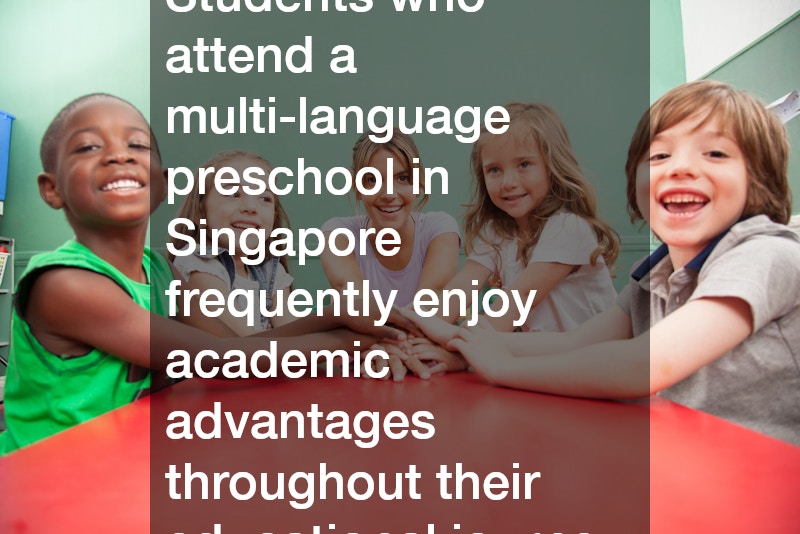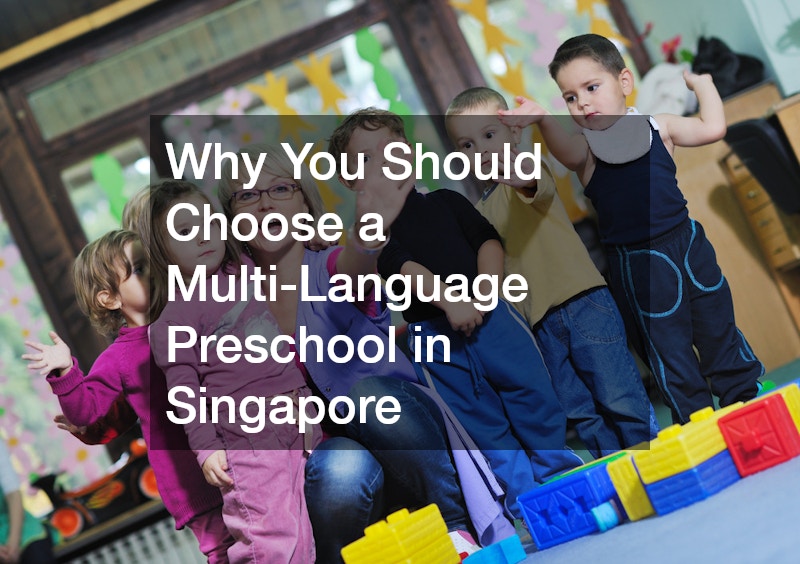Choosing the right preschool for your child is a crucial decision that can significantly shape their educational journey. In Singapore, where cultural diversity and global connectivity thrive, enrolling your child in a multi-language preschool offers unique advantages. These institutions not only foster language skills but also cultivate cognitive development, cultural sensitivity, and prepare children for a globalized future. This article explores the myriad benefits of a multi-language preschool in Singapore, examining how they enhance language acquisition, influence long-term educational prospects, and what challenges may arise.
What are the Benefits of a Multi-Language Preschool?
Cognitive Development Benefits
One of the most significant advantages of a multi-language preschool is the enhancement of cognitive abilities. Research shows that children exposed to multiple languages often exhibit improved problem-solving skills and creativity.
Learning different languages engages various parts of the brain, stimulating critical thinking and allowing children to approach problems from multiple perspectives. This cognitive flexibility nurtures their ability to adapt to new situations and develop innovative solutions, skills that are invaluable throughout life.
Cultural Understanding and Sensitivity
In a multicultural society like Singapore, fostering cultural awareness from a young age is essential. Multi-language preschools expose children to diverse cultures, languages, and traditions, promoting empathy and understanding. This early exposure helps children appreciate the richness of different cultures, reducing biases and prejudices. By learning about various customs and practices, children develop sensitivity toward others, preparing them for a harmonious coexistence in a global community.
How Does It Influence Language Acquisition?
Enhanced Language Proficiency
Learning multiple languages simultaneously significantly boosts a child’s language proficiency. Research indicates that children in multi-language environments often achieve higher fluency levels compared to their peers in monolingual settings. The immersive nature of multi-language preschools, where children hear and practice different languages daily, accelerates their ability to understand and use these languages in context. This comprehensive exposure helps lay a strong foundation for future language learning.
Accelerated Learning Abilities
Early exposure to multiple languages not only enhances language skills but also accelerates overall learning abilities. Children in multi-language preschools often develop stronger metalinguistic awareness, which refers to understanding how language works. This awareness aids in recognizing patterns and structures in language, making it easier for them to learn new languages later on. Consequently, these children often excel in language arts and literacy skills, leading to more successful academic experiences.
What Are the Long-Term Educational Prospects?
Advantages in Academic Pursuits
Students who attend a multi-language preschool in Singapore frequently enjoy academic advantages throughout their educational journey. Studies reveal that these children tend to perform better in standardized tests, particularly in language and reading comprehension. The ability to navigate multiple languages enhances their cognitive flexibility, allowing them to tackle academic challenges with greater ease and creativity. This head start in language skills can lead to improved performance in other subjects as well.
Increased Global Opportunities
In today’s interconnected world, multilingualism opens doors to a wealth of global opportunities. Children who grow up learning multiple languages often find it easier to pursue international careers or study abroad. Multilingual individuals are highly sought after in various industries, including business, diplomacy, and education. By choosing a multi-language preschool, parents are investing in their child’s future, equipping them with the skills needed to thrive in an increasingly globalized workforce.
How Do Multi-Language Preschools Operate?
Curriculum Design
The curriculum in multi-language preschools is carefully designed to ensure that children receive a balanced exposure to each language. Lessons incorporate storytelling, songs, games, and cultural activities, all tailored to enhance language skills while making learning enjoyable. This engaging approach encourages children to use the languages in real-life contexts, fostering both language proficiency and a love for learning.
Teacher Qualifications and Training
Teachers in multi-language preschools are often required to have specialized training in bilingual education and cultural competency. They must be fluent in the languages they teach and equipped with strategies to support children’s diverse linguistic needs. This expertise is essential for creating a nurturing environment where children feel confident to experiment with new languages and express themselves freely.
Are There Any Challenges Involved?
Potential Overload Concerns
While the benefits of multi-language preschools are substantial, there are concerns regarding cognitive overload. Some parents worry that the simultaneous learning of multiple languages might overwhelm young children. However, many studies indicate that when structured appropriately, children can thrive in these environments without experiencing stress or confusion.
Parental Involvement and Support
Parental involvement plays a crucial role in the success of a child’s multilingual journey. Parents can support their children by encouraging language use at home, participating in cultural activities, and fostering a positive attitude towards learning. Open communication between parents and teachers is vital to address any challenges that arise and to ensure that children receive consistent support in their language development.
Conclusion
Choosing a multi-language preschool in Singapore can provide your child with invaluable benefits that extend far beyond language acquisition. From enhancing cognitive abilities and cultural sensitivity to improving long-term academic and global prospects, the advantages are clear. While challenges may arise, proactive parental involvement and a well-structured curriculum can help mitigate these concerns. Ultimately, enrolling your child in a multi-language preschool is an investment in their future, equipping them with the skills and perspectives necessary to thrive in an interconnected world.
.

